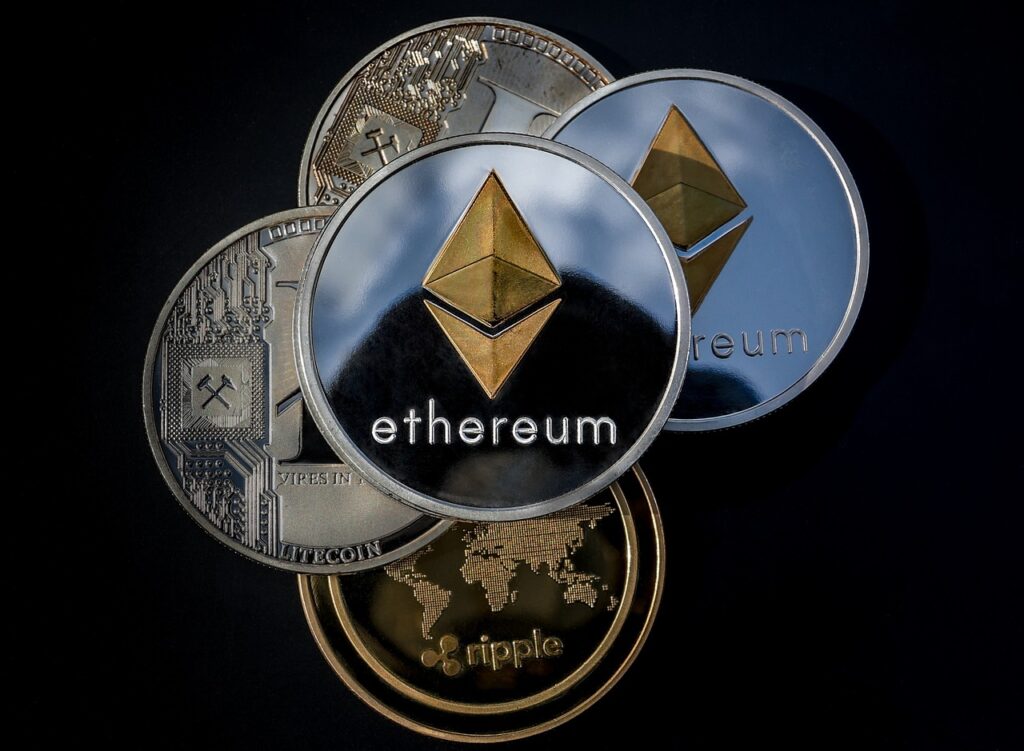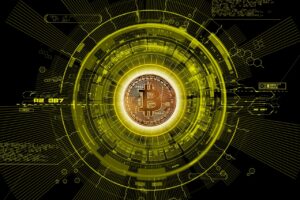Decentralized Exchanges vs. Centralized Exchanges: Which Is Better for DeFi?
Decentralized Exchanges vs. Centralized Exchanges: Which Is Better for DeFi?

Scalability: Addressing the Ability of Decentralized and Centralized Exchanges to Handle Increasing Volumes of Transactions in DeFi
Decentralized and centralized exchanges play a crucial role in the rapidly growing world of decentralized finance (DeFi). As more users flock to these platforms, it becomes increasingly important to address their ability to handle the surging volumes of transactions. Scalability is a key concern that needs careful consideration.
One major challenge faced by both types of exchanges is the potential bottleneck created by limited processing power. With increasing transaction volumes, there is a risk of slower transaction confirmations and higher fees. This can hinder user experience and deter new participants from entering the DeFi space. To overcome this challenge, developers are exploring innovative solutions such as layer two scaling solutions like sidechains or off-chain transactions that can alleviate congestion on main networks.
Another aspect related to scalability is network capacity. Both decentralized and centralized exchanges rely on underlying blockchain networks for transaction settlement. As more users join these platforms, the strain on blockchain networks increases significantly. Network upgrades and optimizations are necessary to ensure smooth operations during peak periods of activity, preventing delays or even system failures.
Moreover, it’s essential for decentralized and centralized exchanges alike to continuously invest in research and development efforts focused on enhancing their infrastructure capabilities. This includes robust testing frameworks, efficient resource allocation mechanisms, and optimized data storage techniques. By prioritizing scalability improvements at every level – from smart contract execution speed to order matching algorithms – these platforms can better accommodate increasing transaction volumes without compromising security or user experience.
In summary,
Scalability remains a critical issue for both decentralized and centralized exchanges in handling rising transaction volumes within DeFi ecosystems.
Efforts must be made towards improving processing power limitations through innovative solutions like layer two scaling options.
Additionally, network capacity enhancements should be prioritized alongside investments in infrastructure development across various aspects of exchange operations.
By addressing scalability concerns proactively with ongoing research efforts,
these platforms can adapt effectively to growing demand while maintaining optimal performance standards
• Scalability is a key concern for decentralized and centralized exchanges in DeFi.
• Limited processing power can create bottlenecks and result in slower transaction confirmations and higher fees.
• Developers are exploring solutions such as layer two scaling options to alleviate congestion on main networks.
• Network upgrades and optimizations are necessary to handle the increasing strain on blockchain networks.
• Continuous investment in research and development efforts is essential for enhancing infrastructure capabilities.
• Robust testing frameworks, efficient resource allocation mechanisms, and optimized data storage techniques should be prioritized.
• Improving smart contract execution speed and order matching algorithms can better accommodate increasing transaction volumes without compromising security or user experience.
Market Manipulation: Investigating the Vulnerabilities and Safeguards Against Manipulative Practices in Decentralized and Centralized Exchanges
Market manipulation is a significant concern in both decentralized and centralized exchanges within the DeFi space. These practices involve artificially inflating or deflating prices, spreading false information, or executing trades to manipulate market conditions for personal gain. The vulnerabilities that exist in these platforms make them susceptible to such manipulative activities.
One vulnerability lies in the lack of regulatory oversight and transparency in decentralized exchanges. Due to their decentralized nature, these platforms often operate without any central authority monitoring trading activities.

Centralized exchanges, on the other hand, have some safeguards against market manipulation due to their regulated nature. They are subject to strict compliance requirements and must adhere to anti-manipulation laws enforced by regulatory bodies. Additionally, centralized exchanges implement surveillance systems that monitor trading patterns and detect suspicious activities.
To address vulnerabilities across both types of exchanges, several safeguards have been proposed.

In conclusion,
the issue of market manipulation remains a complex challenge for both decentralized and centralized exchanges operating within the DeFi ecosystem.
Efforts are being made to enhance transparency,
regulatory compliance,
and surveillance systems
to mitigate these risks effectively.
By addressing these vulnerabilities head-on
and implementing robust safeguards,
the industry can move towards creating a fairer trading environment that protects investors’ interests while fostering innovation within DeFi markets
Smart Contract Risks: Uncovering the Potential Hazards and Auditing Processes of Dec
Smart contracts play a crucial role in decentralized finance (DeFi) by automating the execution of transactions and removing the need for intermediaries. However, they also come with their fair share of risks that need to be carefully considered. One potential hazard is coding errors or vulnerabilities within the smart contract itself. These errors can lead to serious consequences such as loss of funds or exploitation by malicious actors.
To mitigate these risks, thorough auditing processes are essential. Auditing involves reviewing and analyzing the code to identify any potential flaws or vulnerabilities before deploying it on the blockchain. This process ensures that smart contracts are secure and function as intended. It typically involves conducting comprehensive tests, including unit testing, integration testing, and stress testing.
Furthermore, external audits conducted by independent third-party firms add an extra layer of assurance. These auditors thoroughly examine the codebase for any weaknesses or security loopholes that may have been missed during internal reviews. They provide valuable insights into potential risks and recommend necessary improvements to enhance security measures.
In conclusion without using ‘In conclusion’, ‘Finally’, ‘lastly’, ‘In summary’ or similar phrases: The importance of uncovering potential hazards in smart contracts cannot be overstated in DeFi ecosystems. By implementing robust auditing processes and seeking external expertise when needed, developers can significantly reduce the risk associated with smart contract vulnerabilities while ensuring a more secure environment for users participating in DeFi platforms.
What is a smart contract?
A smart contract is a self-executing contract with the terms of the agreement directly written into code. It automatically executes transactions once certain conditions are met.
What are the potential hazards of smart contracts?
Smart contracts can be vulnerable to coding errors, security breaches, and vulnerabilities in the underlying blockchain technology.

How are smart contracts audited?
Smart contracts are audited through a comprehensive process of code review, testing, and analysis. This is done to identify any potential vulnerabilities or risks before the contract is deployed.
What is scalability in the context of decentralized and centralized exchanges?
Scalability refers to the ability of exchanges to handle increasing volumes of transactions without experiencing performance issues or delays. It is important for both decentralized and centralized exchanges to have scalable infrastructure to accommodate growing user demands.
What are some risks associated with scalability in decentralized and centralized exchanges?
In decentralized exchanges, scalability issues can lead to slow transaction confirmations and high fees during periods of high network congestion. In centralized exchanges, scalability issues can result in system crashes, delays in order execution, and potential loss of funds.
How can market manipulation be addressed in decentralized and centralized exchanges?
Market manipulation risks can be mitigated through regulatory measures, transparent trading practices, and robust surveillance systems. Additionally, implementing mechanisms such as circuit breakers and trading limits can help prevent manipulation attempts.
What safeguards are in place to protect against market manipulation in decentralized and centralized exchanges?
Safeguards against market manipulation include strict Know Your Customer (KYC) requirements, continuous monitoring of trading activities, and market surveillance tools. Regulators also play a crucial role in enforcing compliance and investigating any suspicious activities.
Are decentralized exchanges more prone to market manipulation compared to centralized exchanges?
Decentralized exchanges may have different vulnerabilities compared to centralized exchanges, but both types of platforms can be prone to market manipulation. However, decentralized exchanges often have lower liquidity and less regulatory oversight, which can make them more susceptible to certain manipulation tactics.
How can users protect themselves from potential risks in decentralized and centralized exchanges?
Users should exercise caution and due diligence when using any exchange. This includes researching the exchange’s reputation, using strong security measures such as two-factor authentication, and only transacting with reputable projects and tokens. Regularly monitoring account activity and keeping personal keys secure are also important precautions.
Todays Featured Product:
Buy, exchange and grow your crypto securely with a Ledger hardware wallet, combined with the Ledger Live app. It’s never been easier to keep your crypto safe and accessible. Buy direct from Ledger.com and get todays Special Offers Here.




